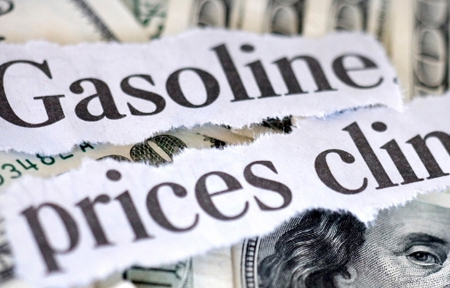Gas Prices to Blame for Rising Food Costs
Category: Miscellaneous
 Soon the growing panic at the gas pump will translate to consumer scares at the grocery store as the domino effect of rising energy costs translates to a rise in the manufacture, distribution and packaging of food. .
Soon the growing panic at the gas pump will translate to consumer scares at the grocery store as the domino effect of rising energy costs translates to a rise in the manufacture, distribution and packaging of food. .
With gasoline being well over $4 per gallon—a level not seen since September 2008, the Energy Department reports—food commodity prices are following suit with the cost of corn, sugar and grain all skyrocketing. Whether experts want to point a finger at recent flooding in the Missouri River Basin, the lingering hurricane season or an increased demand for gasoline due to summer travel, one thing remains certain: nearly every aspect of the food industry has taken a hit.
“If you go into a corn mill or soybean crushing plant they have electricity needs, natural gas needs,” states Stephen S. Nicholson, Chief Economist at International Food Products. “As energy prices increase, it drives up the energy prices of all other food commodities.”
According to Bill Lapp, president of consulting firm Advanced Economic Solutions in Omaha, Nebraska and the former chief economist for ConAgra Foods, the price of corn and wheat have doubled in the last year alone. He also estimates that the higher prices for these commodities equals an estimated $40 billion in costs that have not yet been passed on to the consumer—but higher prices are looming, and he says to expect the increase “sooner rather than later.”
The rapid increase in food inflation this year can be tied to a spike in demand, devastating weather and an atypically dry summer. Rising energy prices only complete the puzzle of increased cost of food and food commodities. Despite a decreased demand for some commodities such as wheat and soybeans, corn and oil continue to escalate.
Energy costs affect nearly every aspect of food manufacturing from production to transportation to even the packaging of food. For instance, any food commodities needing to be shipped or transported may reflect higher retail prices due to increased energy and fuel costs. Farmers have to pay more to fuel their tractors and combines, as well as pay for an increase in the energy cost to dry grain or corn this upcoming fall. But the impact doesn’t stop there. Countless manufacturing practices involve petroleum-based plastics to package the food—a part of the never-ending cycle of costs getting passed on to the consumer. In fact, approximately one-third of grocery costs are contingent upon commodities, with the rest attributable to manufacturing, packaging and distribution, according to Lapp.
Grocers and large retail stores are trying their best to keep prices low for customers, but soon costs will rise high enough that they will be forced to raise prices even more than the recent 2 to 4 percent hike. The long-term implications of the energy and oil market remain clear: the continued hike in energy prices affects every consumer’s bottom line, from filling up the gas tank to filling up the fridge.




